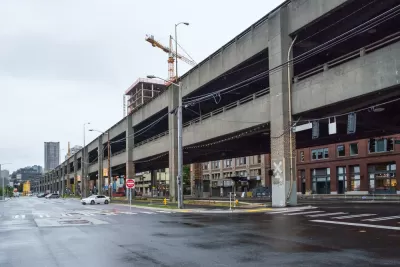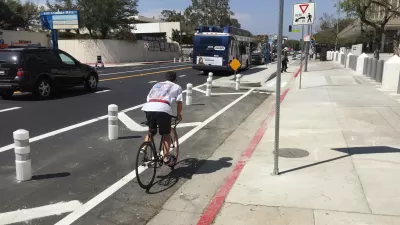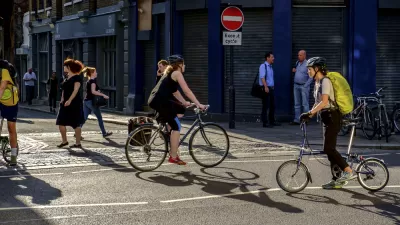Dubbed the "Seattle Squeeze," heavier traffic is expected in the new year as the Alaskan Way Viaduct closes and downtown construction projects continue. While the city prepares, activists want to use the opportunity to encourage other modes.

"On Jan. 11, 2019," Josh Cohen writes, "the Highway 99 Viaduct will close, three weeks before its replacement tunnel opens. With the Viaduct's more than 90,000 daily drivers spilling onto other streets and highways, January is sure to be a mess." On top of that, major construction projects will continue to impact traffic conditions until 2024, a period some are calling the "Seattle Squeeze."
During the Viaduct closure and beyond, the city is "desperate to get fewer people to drive solo." But as the city focuses most of its attention on mitigating the Squeeze's immediate effects, activists want to use the moment to change how Seattleites get around in a lasting way. They include Move All Seattle Sustainably (MASS), an advocacy group that has released a list of priorities for the city during the crunch.
Activists are focused on ways to improve bus service, build out bike lanes, and make it easier for commuters to walk to work. Making progress on those fronts, they argue, will make the city's long-term transportation goals more feasible as people contemplate getting out of their cars. Those goals include congestion pricing, "the centerpiece of [Mayor] Durkan's long term strategy." If implemented, Seattle would be the first U.S. city with such a policy.
FULL STORY: As Seattle’s traffic doom looms, some see a silver lining

Alabama: Trump Terminates Settlements for Black Communities Harmed By Raw Sewage
Trump deemed the landmark civil rights agreement “illegal DEI and environmental justice policy.”

Planetizen Federal Action Tracker
A weekly monitor of how Trump’s orders and actions are impacting planners and planning in America.

The 120 Year Old Tiny Home Villages That Sheltered San Francisco’s Earthquake Refugees
More than a century ago, San Francisco mobilized to house thousands of residents displaced by the 1906 earthquake. Could their strategy offer a model for the present?

In Both Crashes and Crime, Public Transportation is Far Safer than Driving
Contrary to popular assumptions, public transportation has far lower crash and crime rates than automobile travel. For safer communities, improve and encourage transit travel.

Report: Zoning Reforms Should Complement Nashville’s Ambitious Transit Plan
Without reform, restrictive zoning codes will limit the impact of the city’s planned transit expansion and could exclude some of the residents who depend on transit the most.

Judge Orders Release of Frozen IRA, IIJA Funding
The decision is a victory for environmental groups who charged that freezing funds for critical infrastructure and disaster response programs caused “real and irreparable harm” to communities.
Urban Design for Planners 1: Software Tools
This six-course series explores essential urban design concepts using open source software and equips planners with the tools they need to participate fully in the urban design process.
Planning for Universal Design
Learn the tools for implementing Universal Design in planning regulations.
Clanton & Associates, Inc.
Jessamine County Fiscal Court
Institute for Housing and Urban Development Studies (IHS)
City of Grandview
Harvard GSD Executive Education
Toledo-Lucas County Plan Commissions
Salt Lake City
NYU Wagner Graduate School of Public Service





























